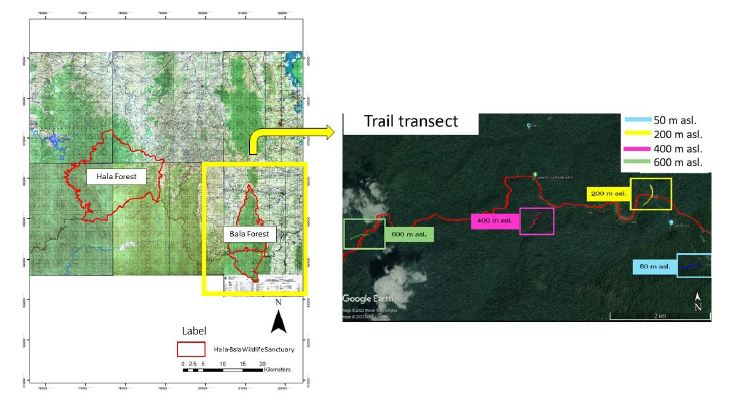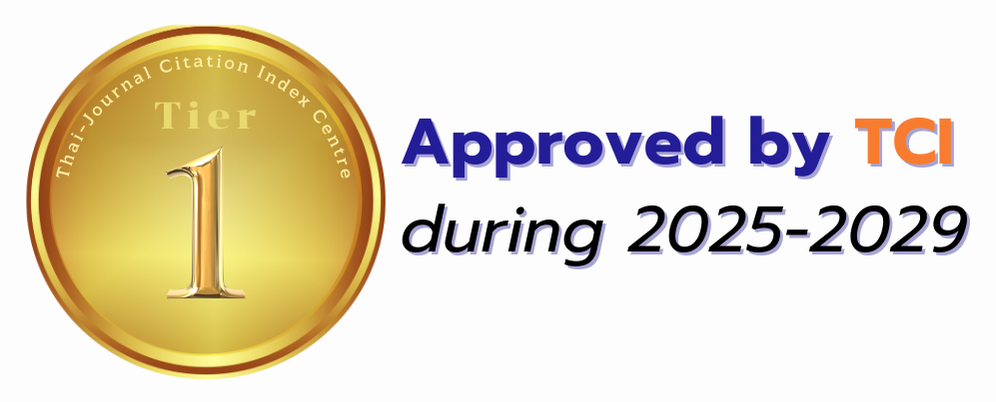Species Diversity of Amphibians along Altitude Gradient at Hala – Bala Wildlife Sanctuary, Narathiwat Province
Keywords:
Biodiversity, wildlife management, species composition, Malayan mixed dipterocarp forest typeAbstract
Background and Objectives: The amphibian diversity can used for indicating environmental quality and biodiversity management in the protected area. This study aimed to observed amphibian diversity and their distribution along the altitudinal gradient at Hala-Bala Wildlife Sanctuary.
Methodology: Line transects were determined along the stream with different altitudes; 50, 200, 400, and 600 m a.s.l. for amphibian observation. Monthly monitoring was done from 2013 – 2021. The cluster analysis was applied for grouping the amphibian community along altitude gradient, including, species diversity and abundance.
Main Results: The results show that total amphibians of 35 species 25 genera and 5 families were found. Shannon-Weiner index, Simpson index and evenness index were 1.40 ±0.37, 0.37 ±0.15 and 0.71 ±0.17, respectively. The conservation status of found species classified into protected species and IUCN Red List as 6 and 34, respectively. Six species of highest abundant species were classified such as Phrynoidis asper, Chacorana raniceps and Pulchrana signata, which common, moderately common, uncommon and rare abundance were 2, 5, 7 and 15 species, respectively. The cluster analysis divided amphibians into 3 sub-community; lower elevation (50 m a.s.l.), intermediate elevation (200-400 m a.s.l.), and upper elevation (600 m a.s.l.). The lower community had highest Shannon-Weiner index (1.57±0.31) and evenness index (1.57±0.31), while the middle community has highest species richness (35 species) and Simpson index (0.37±0.15). The species of Amolops larutensis and Limnonectes blythii was the most frequently found and distributed all elevations.
Conclusion: Amphibians varied along altitudinal gradients and specific to Malayan habitat. Thus, the specific habitat of amphibians should be concerned on conservation plan to optimize the conservation and sustainable management.
Downloads



.png)





